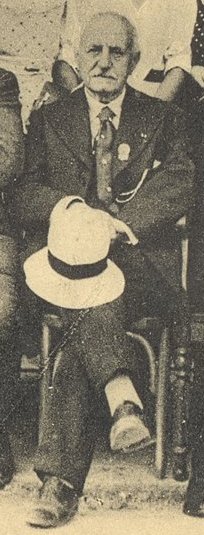Maurice Caullery facts for kids
Maurice Jules Gaston Corneille Caullery (born September 5, 1868, in Bergues; died July 13, 1958, in Paris) was an important French biologist. He spent his life studying tiny creatures and how living things change over time.
About Maurice Caullery
Maurice Caullery was born in a town called Bergues in northern France. This was on September 5, 1868. He went to school in Douai when he was younger.
He started teaching zoology (the study of animals) in Lyon in 1897. From 1901 to 1903, he taught in Marseille. Then, from 1903 to 1909, he taught at the famous Sorbonne in Paris. He studied how living things change and develop there.
In 1909, he took over from another famous scientist, Alfred Mathieu Giard. Caullery became the director of a special zoology station in Wimereux. Later, in 1923, he opened a new laboratory in Paris. This lab also focused on how living things evolve.
Caullery was especially interested in very small living things called parasitic protozoans. These are tiny, single-celled organisms that live on or inside other living things. He also studied invertebrates, which are animals without backbones. He looked at sea creatures like tunicates and annelids (segmented worms). He wanted to understand how these animals changed over many years. His work on a creature called Siboglinum weberi helped scientists learn about a group of worms called Siboglinidae, also known as beard worms. He also studied insects.
Maurice Caullery was a respected leader in science. In 1915, he became the president of the French Zoological Society. Later, he led the Académie des Sciences (French Academy of Sciences) in 1945. He also became president of the Société de biologie (Society of Biology) in 1946.
He passed away in Paris on July 13, 1958.
His Ideas on Evolution
Maurice Caullery had interesting ideas about evolution. Evolution is the way living things change and develop over very long periods. He supported ideas from both Lamarckism and Mendelism.
Lamarckism suggested that animals could pass on traits they gained during their lives to their children. For example, if an animal used its neck a lot and it got longer, its babies might be born with longer necks. Caullery believed this type of evolution happened a lot in the past.
Mendelism, based on the work of Gregor Mendel, explains how traits are passed down through genes. Caullery thought that in modern times, this genetic way of passing on traits was the main way evolution worked. He believed the Lamarckian way of evolution had "run out of steam." This meant he thought the main way evolution happened had changed over time.
Awards and Honors
Maurice Caullery received many important awards for his scientific work.
In 1930, he was made an Honorary Fellow of the Royal Society of Edinburgh. Then, in 1948, he became an Honorary Fellow of the Royal Society in London. These are very high honors for scientists.
In 1958, he was given the special Darwin-Wallace Medal by the Linnean Society of London. This medal is a very prestigious award for people who make big discoveries in evolution and biology.
Images for kids


